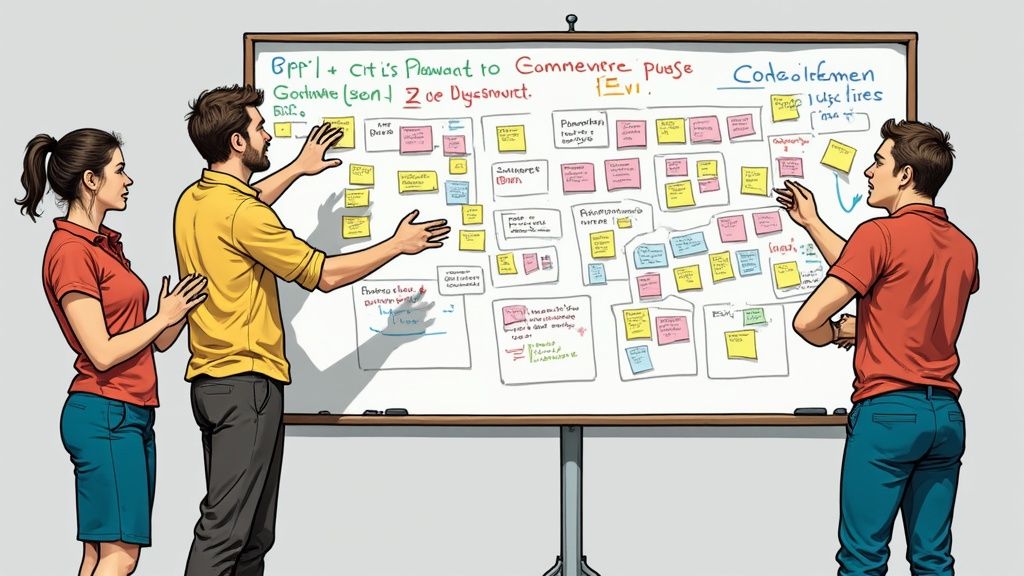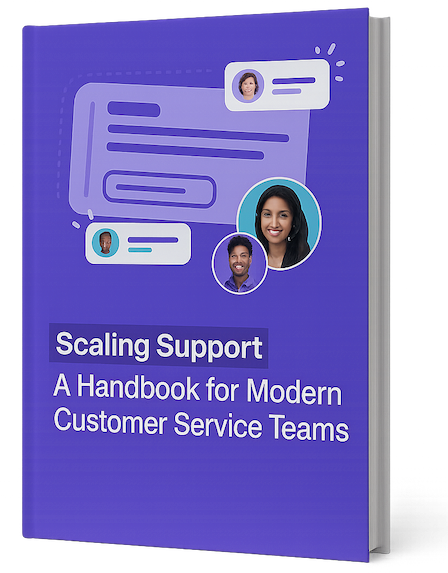Companies are discovering that team collaboration goes far beyond basic group work. It requires building systems where teams communicate openly, share goals, and actively support each other. When done right, this focused approach to teamwork delivers clear results across an organization.
The Measurable Benefits of Effective Teamwork
When people with different skills work closely together, they spark improved innovation and find better solutions to challenges. This happens because they can look at problems from multiple angles and build on each other’s ideas. Team members also report higher job satisfaction when they feel heard and valued by their colleagues. This positive environment helps keep good employees around longer and gets better work from everyone.
The business benefits are clear too. Teams that collaborate well make fewer mistakes and work more efficiently. Studies show that teams working toward shared goals perform 5 times better than those who don’t collaborate effectively. This makes sense – when people combine their knowledge and experience, they create better results. Research from Queens University found that 75% of workers see teamwork as crucial for success. For more insights on this topic, check out this collaboration guide. Better teamwork leads directly to stronger business performance.
Adapting to the Modern Workplace
With more teams working remotely or in hybrid setups, collaboration looks different today. Companies are finding new ways to keep teams connected and working well together, even when they’re not in the same place. This includes using communication tools, project tracking systems, and virtual team activities. The goal is making sure everyone can work together smoothly and feel part of the team, no matter where they are.
Real-World Examples and ROI
Looking at actual companies shows how much strategic collaboration matters. Many organizations have improved key metrics after focusing on better teamwork. They finish projects faster, launch products sooner, and get better feedback from customers. These examples prove that investing in team collaboration pays off with real business results. They also give helpful lessons to other companies wanting to improve how their teams work together.
Building Communication Channels That Actually Work
Good communication forms the bedrock of successful team collaboration. Setting up the right frameworks isn’t just about tools – it’s about creating meaningful dialogue that delivers results while avoiding time drains like unnecessary meetings.
Identifying and Eliminating Bottlenecks
Taking a close look at where information gets stuck is essential. Common issues include too many approval layers or overloaded team members becoming traffic jams in the workflow. This creates frustration and slows progress. The solution often lies in streamlining processes and adjusting workloads to keep information flowing smoothly.
Feedback Systems for Team Alignment
Creating a culture of constructive feedback helps keep teams moving in the same direction. Regular check-ins, both formal and informal, give team members space to voice concerns and stay connected to project goals. For instance, quick daily stand-up meetings work well for sharing updates and solving problems efficiently.
Transparency and Trust
When teams have access to the information they need, they perform better and feel more valued. Clear information sharing creates accountability and reduces confusion. Research shows the impact – 86% of employees cite poor communication as the main cause of workplace failures. Companies with strong communication are also 4.5 times more likely to retain their best people. Find more statistics here. The message is clear – open and direct communication matters.
Synchronous vs. Asynchronous: Finding the Right Balance
Remote and hybrid work require thoughtful approaches to communication timing. While video calls and chat apps help with immediate discussions, email and project tools allow for focused work across different schedules and time zones. Finding the right mix of real-time and asynchronous communication helps teams collaborate effectively while respecting individual working styles.
Leveraging Diversity for Breakthrough Innovation

Smart companies realize that diversity delivers real business value – it’s not just about checking boxes. When teams bring together different backgrounds and viewpoints, they unlock new ideas and find creative solutions to complex problems. Let’s explore how to build high-performing teams that embrace these differences.
Building Inclusive Teams
Creating a truly inclusive environment starts with acknowledging each person’s unique traits. Some team members thrive in group brainstorming, while others do their best thinking alone. Understanding and working with these individual styles helps teams collaborate more effectively. When companies actively support these differences, teams reach their full potential.
The data makes a clear case for diversity. Teams with varied backgrounds consistently outperform homogeneous groups by up to 35%, according to recent research. But diversity alone isn’t enough – it must be paired with active inclusion so everyone feels they belong and can contribute their best ideas.
Creating Psychological Safety
For teams to innovate, they need psychological safety – an environment where people feel secure taking risks and sharing ideas without fear of judgment. When team members trust they can speak up, even with half-formed thoughts or concerns, it leads to better problem-solving and more creative solutions.
Frameworks for Inclusive Collaboration
Making inclusion work requires clear structures and processes. This includes setting communication guidelines, creating fair decision-making approaches, and developing ways to handle disagreements that respect different viewpoints. Building these practices into everyday work, from team meetings to project planning, helps diverse teams collaborate smoothly.
Measuring and Improving Diversity Metrics
To make real progress on inclusion, teams need to track key metrics. This means looking at representation across different groups and regularly checking how included people feel. The data helps identify what’s working and what needs to change. Over time, teams can refine their approach to create an environment where everyone thrives and innovates together.
Mastering Project Management for Maximum Team Impact
Project management can make or break a team’s performance. When done well, it brings teams together and delivers real results. This guide focuses on practical ways to manage projects that actually work for your team.
Setting Compelling Goals and Maintaining Accountability
A project needs clear direction to succeed. The most effective goals follow the SMART framework – specific, measurable, achievable, relevant, and time-bound. For instance, instead of saying “we need better customer feedback,” set a concrete goal like “increase customer survey response rates by 20% this quarter.” This precision helps everyone understand exactly what success looks like.
Regular check-ins keep projects on track without micromanaging. Tools like SupportMan make it easy to stay updated on progress and spot potential issues early. The key is finding the right balance – enough oversight to maintain momentum while giving teams room to work independently.
Adapting Frameworks to Your Team’s Needs
Project management isn’t one-size-fits-all. While Agile works great for some teams, others may need a more structured approach like Waterfall. For example, a social media team might thrive with quick two-week sprints, while an engineering team could require longer development cycles. What matters is picking methods that match how your team naturally works.
Choosing the Right Project Management Tools
The right tools act as your team’s central hub for communication and tracking. Popular options like Asana and Trello can streamline workflow, but simpler solutions like shared documents might work better for small projects. Consider your team’s needs – a basic kanban board may be perfect for a five-person team, while larger groups often need more robust features for managing complex dependencies.
Measuring Project Success Beyond Traditional Metrics
While hitting deadlines and budgets matters, truly successful projects deliver more. Look at factors like team engagement, skill development, and collaboration quality. Did team members learn new abilities? Did working relationships improve? These “soft” metrics often reveal more about long-term success than just checking boxes. By tracking both traditional and people-focused measures, project management becomes a tool for building stronger teams.
Choosing Technology For Better Team Results

Selecting the right collaboration tools makes a real difference in how well teams work together. Let’s explore practical ways to pick and use these tools effectively while keeping the human element front and center.
Smart Ways to Pick the Right Tools
The best tools make work easier, not harder. When evaluating options, look for ones that work well with what your team already uses. For example, if your team relies heavily on Slack, consider tools like SupportMan that plug right in. This approach helps your team adopt new tools faster since they fit naturally into existing workflows.
Think carefully about what your specific team needs. Small teams might do great with a basic project board, while larger teams handling complex projects often need more advanced features. By matching the tool to your team’s actual needs, you’ll support good collaboration instead of getting in its way.
Making New Tools Stick
Just giving teams new technology isn’t enough – you need a clear plan for helping people learn and use it. Make sure your team gets hands-on practice time and can easily find help documents when they need them.
Getting feedback from your team is vital too. Check in regularly to see how people are using the new tools and what could work better. When you keep adjusting based on what you hear, you make sure the tools actually help your team work better together.
Showing the Value of Collaboration Tools
To prove new tools are worth the investment, track meaningful numbers. Look at things like time saved on tasks, how many more projects get done on time, or increases in good customer feedback through platforms like Intercom, which works smoothly with tools like SupportMan.
By measuring these concrete results, you can show exactly how the tools help your team work better and contribute to business goals. This data helps justify the investment and shows the real impact on team success.
Keeping Remote Teams Connected
Tools play a key role in helping spread-out teams stay close. While video calls and chat help bridge physical gaps, it’s just as important to have tools for working across time zones. Team members need ways to collaborate that don’t require everyone to be online at the same time.
This balanced mix of real-time and flexible communication tools helps teams stay connected while respecting different work schedules. When you combine good tools with thoughtful communication practices, teams can succeed no matter where they work.
Building a Culture of Continuous Collaboration Excellence

Great teamwork is built on more than just tools and processes. The real magic happens when your team embeds collaboration best practices into their daily work. This means creating an environment where people feel safe sharing ideas, trying new approaches, and learning from both wins and mistakes.
Implementing Effective Feedback Systems
Quality feedback keeps teams performing at their best. But feedback only works when people feel comfortable giving and receiving it openly. That’s why setting up both formal check-ins and casual conversations matters – it prevents small issues from becoming big problems. Tools like SupportMan help by connecting feedback directly into your team’s existing communication channels.
The Power of Productive Retrospectives
Think of retrospectives like a sports team watching game footage – they’re not about dwelling on mistakes but finding ways to improve. These structured meetings give teams dedicated time to celebrate successes, identify challenges, and make specific plans to do better next time. The key is focusing on actionable takeaways that will enhance future projects.
Turning Insights into Action
Spotting areas for improvement is just the start – the real value comes from making concrete changes. Successful teams create clear action plans with owners and deadlines. For example, if a retrospective reveals that information isn’t flowing well, the solution might be adding daily stand-ups using SupportMan to keep everyone in sync. Regular check-ins help ensure those changes stick.
Measuring Team Development and Celebrating Wins
You can’t improve what you don’t measure. Smart teams track key metrics like project completion rates and customer satisfaction scores to gauge their progress. Just as important is taking time to recognize achievements, whether big project launches or small daily victories. A simple “great job!” can motivate people and build the positive culture that high-performing teams need.
Ready to take your team’s collaboration to the next level? Discover how SupportMan can transform your team collaboration.


